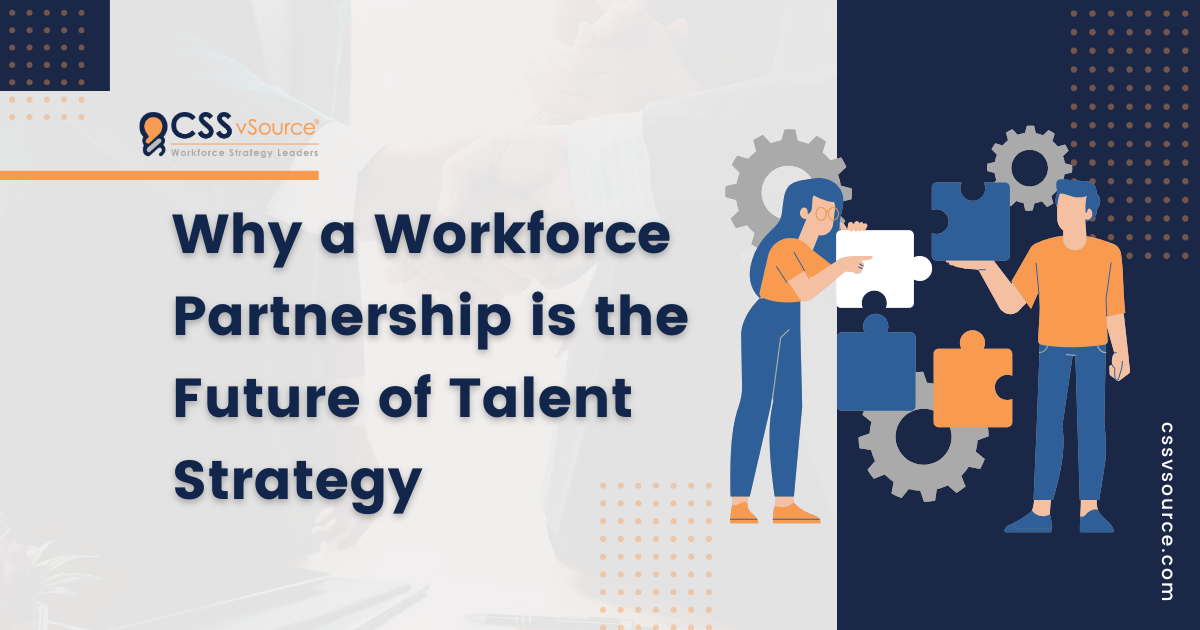The pace of change in today’s workforce ecosystem is unforgiving. Whether it’s adapting to economic shifts, regulatory demands, or evolving candidate expectations, organizations are feeling the pressure to do more with less—faster. Yet one strategic lever remains underutilized: the right workforce partner.
The Problem with Traditional Outsourcing
Too often, outsourcing is reactive. It’s driven by headcount surges or system overloads, and solutions are chosen for speed rather than strategy. This approach leads to a breakdown in communication, inconsistency in quality, and little to no long-term value. It’s a patch, not a plan.
We’ve spoken with HR and Talent leaders across Financial Services, Life Sciences, Insurance, and Healthcare, and the message is consistent: they don’t want to manage more vendors—they want fewer, smarter partners who act with insight, flexibility, and transparency.
What a Workforce Partner Should Be
Today’s most effective workforce partners do more than source candidates—they bring structure, clarity, and cohesion to the entire hiring process. The best models are those that embed into your existing systems and teams, not work around them.
Organizations that benefit the most from external support typically see improvements in:
- Time-to-fill and process consistency
- Candidate fit, both in terms of skill and cultural match
- Real-time insight into hiring data and workforce spend
- More engaged hiring managers with fewer administrative bottlenecks
These gains don’t come from shortcuts. They come from thoughtful alignment: mapping recruiting support to your workflows, systems, and strategic goals. Whether a company is consolidating operations or addressing turnover pain points, the right structure helps bring order to complexity.
Rethinking Flexibility
Flexibility in hiring solutions isn’t about having less structure—it’s about building the right structure. As workforce needs become more specialized and variable, rigid, one-size-fits-all approaches fall short.
A flexible model adapts to organizational nuances: how teams are structured, where hiring volumes spike, and which roles require niche expertise. It allows for both scale and precision, especially when managing a mix of exempt and non-exempt positions or specialized functions.
In practice, we’ve seen how this adaptability can reduce reliance on multiple vendors, shorten hiring timelines, and improve consistency in candidate experience. These aren’t hypothetical benefits—they’re outcomes grounded in operational design and execution.
Looking Ahead
As we move deeper into 2025, workforce strategy will become inseparable from business strategy. Talent acquisition must be proactive, data-driven, and built for adaptability. That’s not possible with disconnected vendors or legacy staffing solutions.
What is possible? A model where your partner is embedded, invested, and accountable.
That’s the CSSvSource difference. And that’s the future of hiring.

